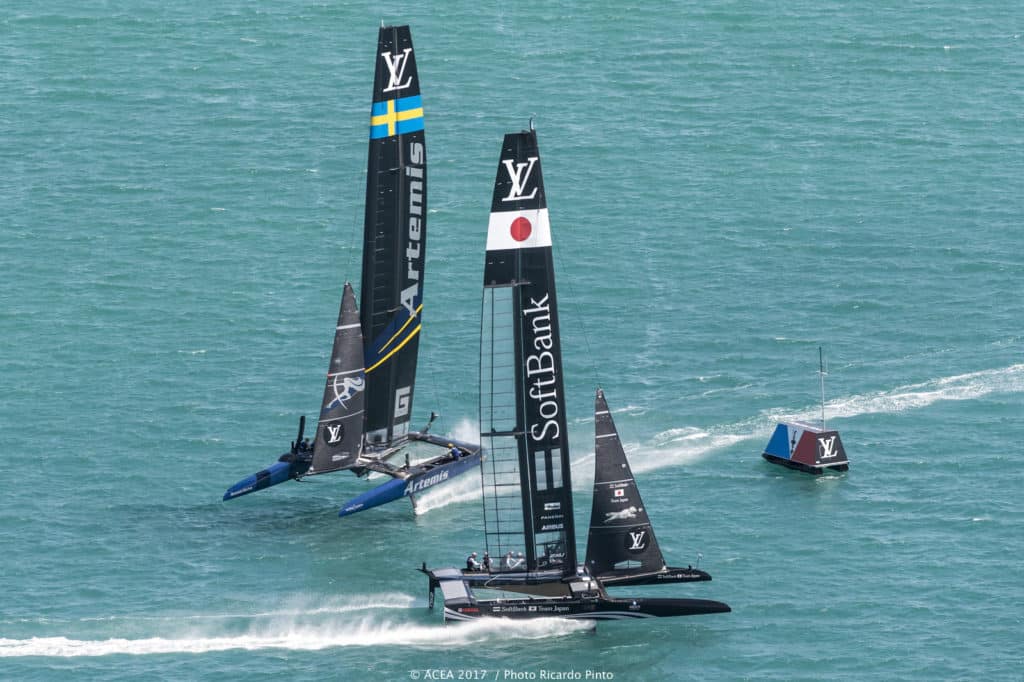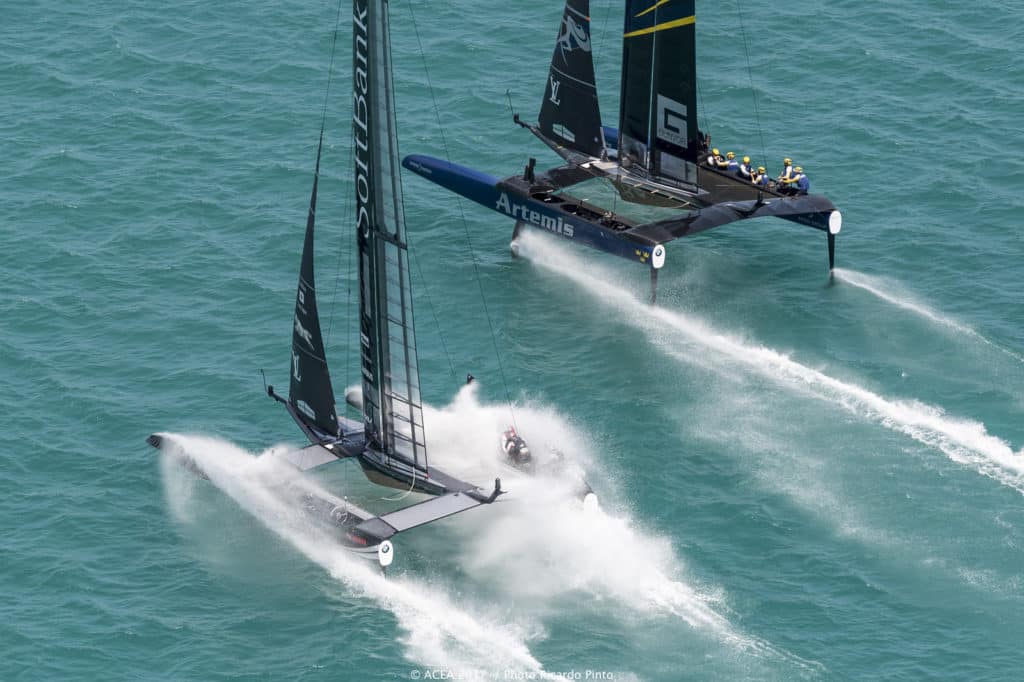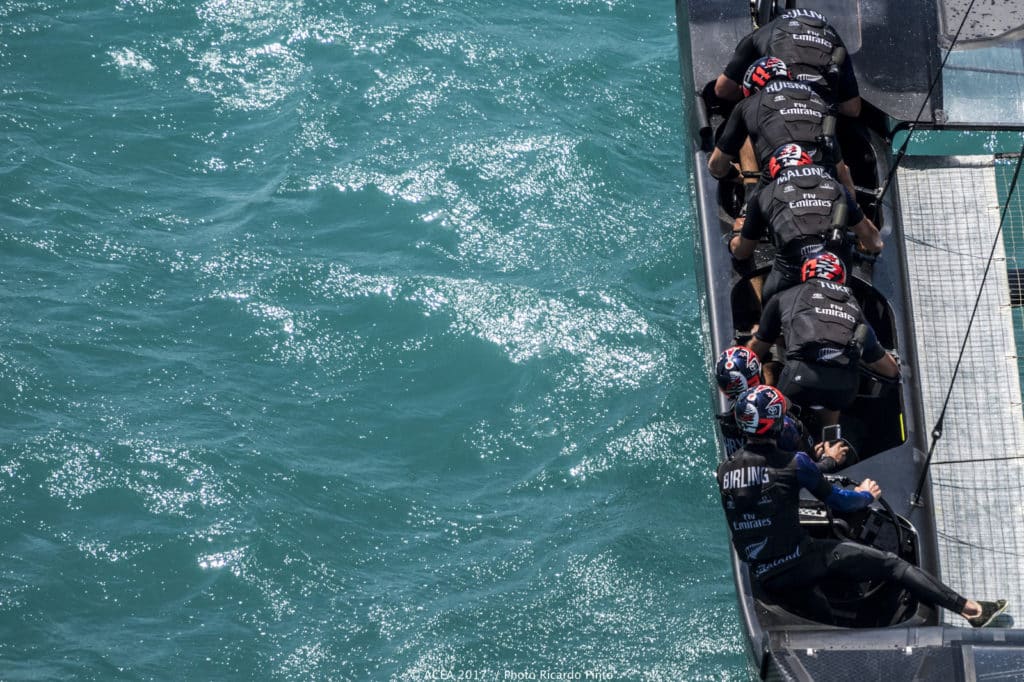This week’s capsize by Emirates Team New Zealand was a reminder that even though America’s Cup catamarans are some of the most technologically amazing boats ever built, they are far from infallible. Britain’s Land Rover BAR team has been learning that lesson at AC35 too, with a substantial crash that required repairs and, later, a broken wingsail.
Here’s a look at three tech advances that still have all the teams learning on the course as well as in the sheds after each day’s racing is done.

Wingsails
Wingsails share more similarities with aircraft wings than conventional soft wings, and at speeds approaching 50 knots on the water, they’re under serious pressure to perform.
When Land Rover BAR suffered damage to its wingsail, Sir Ben Ainslie told ABC News that it was a “technical bit of kit, so I can’t talk too much about exactly what did break, but it has something to do with the wing-control system, and a breakdown there that was pretty catastrophic.”
Paul Campbell-James, the wing trimmer, told the Financial Times that “the wing just went ‘pop'” and shifted from its usual setting to being at maximum camber and power, leaving the America’s Cup sailors helpless. “In three years of sailing we have maybe had one wing breakage,” he said. “And here we are in the first race of the semi-final and it goes pop.”
When it comes to getting the wingsail system under control, Land Rover BAR’s chances at this point lie as much in its technical team as in its sailing skills.

Hydrofoils
Hydrofoils are mounted underneath the catamaran’s hull and lift it out of the water, increasing its speed. The AC35 teams are still seeing just how far they can push the hydrofoil technology; Emirates Team New Zealand, prior to its capsize yesterday, was looking impressive in this area, having completed the whole course once on hydrofoils without the hull touching the water.
“The systems required to control the foils are a new area for Cup teams,” said Land Rover BAR’s Chief Technology Officer Andy Claughton. “To do this the crew has to manually pump the hydraulic fluid back and forth to effect the controls.”
Perhaps it was inevitable that Emirates Team New Zealand would become both the first to foil the whole course and the first to push hard enough to capsize. Back in April, Skipper Glenn Ashby told Stuff, “Every day you have a few of those moments where you think, ‘oooh we got away with that one.’ … You are pushing to find where the edge of those limits are.”

Bicycle-Style Grinders
After preparing the technology for around three years, Emirates Team New Zealand introduced bicycle-style grinders at the beginning of this year. On the hull, four bikes power the hydraulic system, which raises and lowers the foils and pulls in the wingsail.
Other teams rejected the technology. According to Cup Experience, they did not feel the effort was worth it since it would decrease crew mobility, with traditional grinders able to run back and forth between hulls.
So far, the technology itself seems to be holding up, with no major problems reported.
In fact, the only major issue surrounding grinders so far has involved the traditional ones and sailing technique, when Land Rover BAR’s catamaran came down upon Softbank Team Japan in a crash—and one of the latter’s grinder pedestal handles tore a hole clear through the Land Rover BAR boat hull. The damage was so extensive that it required nearly 20 feet of the carbon-fiber casing and aluminum honeycomb filling to need cutting away and repair.
Find all of Yachting‘s coverage of the 35th America’s Cup here!









